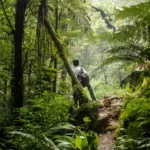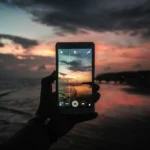Table of Contents
ToggleIntroduction

Photo Credit: Caving In SE Asia
Where is The Gomantong Cave Located?
Why is Gomantong Cave Famous

Photo Credit: Rachel’s Ruminations
Bird's Nest Harvesting: A Centuries-Old Tradition

Photo Credit: Andrews Fabulous Travel blog
Wildlife You Might See Inside the Cave
- Cockroaches (millions of them)
- Giant centipedes
- Cave-dwelling snakes like the Cave Racer, which prey on bats
- Long-legged crickets and beetles
- And of course, the resident bat colonies

Photo Credit: Naturetrek

Photo Credit: Emanuele Biggi
What to Expect on a Tour of Gomantong Cave
- A guided walk through the jungle and cave system
- An educational briefing on bird’s nest harvesting
- The chance to witness the evening bat exodus at dusk
- Optional visits to nearby Kinabatangan River lodges for an extended eco-tourism experience

Conservation Efforts & Eco-tourism Impact
Managing Harvesting and Wildlife Protection
Ethical Tourism Guidelines
- Follow all signage and stay on designated boardwalks
- Avoid touching or disturbing cave structures
- Refrain from using flash photography, which can disorient bats and birds
- Support licensed, local tour operators who reinvest in conservation
Best Time to Visit Gomantong Cave
Nest Harvesting Seasons
- February to April
- July to September
Bat Exodus Timing (Daily Fly-Out)
Frequently Asked Questions (FAQs) Gomantong Cave
1. Can I Visit Gomantong Cave Without a Guide?
Yes, visitors are allowed to enter Gomantong Cave without a guide, as the site is open to the public and features a well-maintained boardwalk. However, we highly recommend hiring a licensed Sabahan nature guide, especially if you want to spot wildlife, understand the cultural significance of bird’s nest harvesting, and safely navigate the more slippery sections of the cave. Guides also help ensure you’re respecting conservation guidelines.
2. Is the Cave Tour Suitable for Kids?
The tour is generally suitable for children aged 7 and above who are comfortable with dark, damp environments and creepy-crawlies like insects and bats. The cave is safe when using the designated paths, but the sensory experience—strong smells, dim lighting, and wildlife—may be overwhelming for very young kids. Parents should use discretion and ensure children stay close on the boardwalk.
3. What’s the Difference Between Black and White Bird’s Nests?
White bird’s nests are purer and considered more valuable due to their cleaner appearance and smoother texture. These nests are often used in high-end bird’s nest soup and are more expensive. Black nests contain more feathers and impurities but are still cleaned and sold for consumption. Both types are harvested sustainably under strict government regulation and are important for the local economy.
4. When is the Best Time to See the Bat Exodus?
The best time to witness the bat exodus is in the early evening, typically between 5:30 PM and 6:30 PM. Arrive at least 30 minutes early to secure a good viewing spot. During this time, millions of bats pour out of the cave entrance in a swirling column across the sky. It’s one of the most iconic natural spectacles in Borneo and a dream for wildlife photographers.
5. Can I See Bird Nest Harvesting During My Visit?
6. What Should I Wear and Bring for the Cave Tour?
Wear sturdy closed-toe shoes with a good grip (the floor can be slippery), lightweight breathable clothing, and insect repellent. Bring a torchlight or headlamp for navigating darker sections, a reusable water bottle, and hand sanitizer due to the presence of guano and wildlife. If you’re planning to photograph the bat exodus, bring a camera with low-light capability and a tripod.




